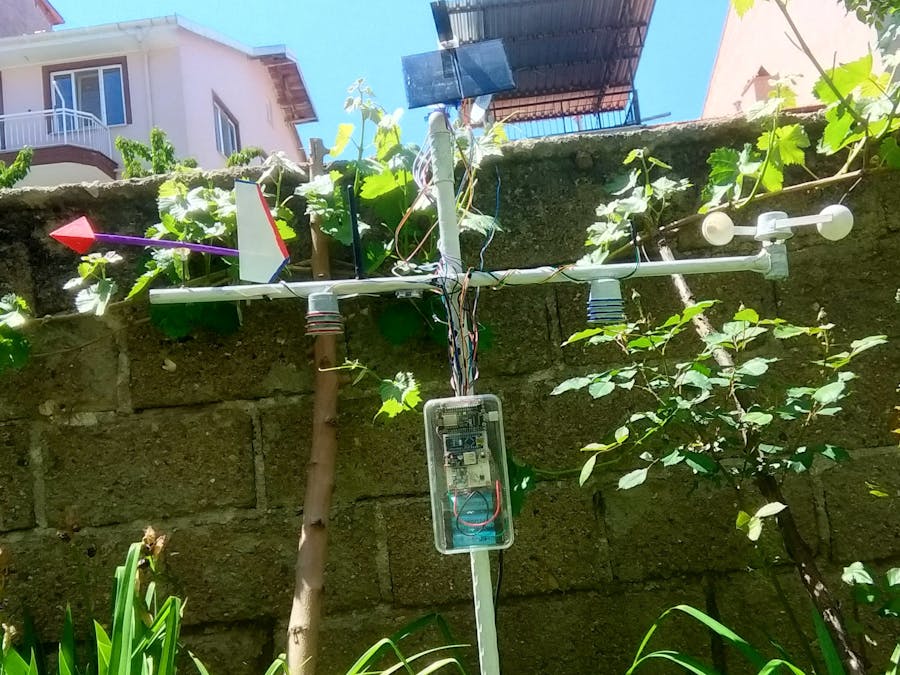What are the benefits of a personal weather station what can it be used for ?
There are many benefits to having a personal weather station. Some of these benefits include:
- Knowing the current conditions at your location, including temperature, humidity, wind speed and direction, rainfall amounts, etc. This information can be useful for planning activities or deciding what clothing to wear.
- Monitoring trends over time in order to better understand the local climate and how it is changing. For example, you may notice that summers are getting hotter or winters colder than they used to be.
- Receiving warnings about severe weather events like thunderstorms, tornadoes, floods or hurricanes heading your way so that you can take appropriate action to protect yourself and your property.
- Sharing data with other people interested in weather (such as amateur meteorologists), which can help improve forecasts for everyone involved.
DHT22DHT22 temperature and humidity sensor is an advanced sensor unit that gives calibrated digital signal output. It is highly reliable and stable in long-term operation. DHT22 has an 8-bit micro controller on it and the product has a short response time. The DHT22 Temperature and Humidity Sensor has a precise calibration and the calibration coefficient is stored in the OTP memory on some kind of program. The product refers to this coefficient stored in memory during detection.
Features:• It gives digital output.
• Operating Voltage: 3.3-5 VDC
• Measurement Range:
• Humidity:0-100%RH
• Temperature:- 40 - 80 °C
•Sensibility:
• Humidity: +/-3% (Max 5%) RH
• Temperature:<+/- 1°C
• Measurement Period: 2 s
• Product Dimensions: 22x28x5 mm
BMP 180The BMP180pressure sensor is a digital output sensor that measures the pressure of the ambient air. It is a small and very useful product. It measures pressure between 300 and 1100 hPa and transmits altitude information in the range of+9000 - -500m. It communicates with different micro controllers and development boards via I2C protocol.
Features:• Supply Voltage: 1.8 – 3.6V
• I2C Interface
• Maximum I2CRate: 3.5Mhz
• Height measurement with ±25cm accuracy
• Pressure Measurement Range: 300 – 1100hPa
• (altitude measurement in the range of +9000m to -500m)
Rain SensorAn analog value can be read on the sensor output pin as a result of the contact of the conductor lines drawn parallel to each other with water. Using the sensor is very simple. By making the supply voltage and ground connection, reading can be made from the sensor output leg. Since it gives both digital and analog output, it can be easily adapted to different systems. The sensitivity of the sensor can also be adjusted with the help of the pot on the sensor.
Features:• Operating Voltage: 3 - 5V
• Working Current: <20mA
• Sensor Output: Digital and Analog
• Sensor
sensitivity adjustment
• Sensor Area:50x38x10mm
Soil Humidity SensorSoil humidity sensor is used to measure the humidity in the soil or to measure the liquid level in a small scale. Humidity sensor probs must be stuck in the soil in operation. The resistance of the liquid or the soil will generate a potential difference between two probs. It is possible to measure the humidity respect the magnitude of this potential difference. The conductivitiy of the material increases as the humidity of the soil increases. It is possible to set a precision level via the trimpot placed on the PCB. It is possbile to use this sensor with Arduino and many other microcontroller platforms.
Features:• Operating Voltage: 3.3 V - 5 V
• Output Voltage: 0 V - 4.2 V
• Current: 32 mA
• Output signal type: Digital and Analog
To put the ESP8266 in deep sleep mode, use ESP. deepSleep(uS) and pass as argument sleep time in microseconds. GPIO 16 (nodeMcu D0) must be connected to reset (RST) pin so the ESP8266 is able to wake up. For more information about ; Link
In order to save more energy, we will only operate the rain and light intensity sensors at the time of measurement. for this, we will connect the VCC cables of the sensors to the PWM pins of the nodeMcu and we will add in the code to output from those pins at the time of measurement.
Importance of deep sleep modeNormal mode; 140 milliamps continuously
In deep sleep mode; 19.2 milliamps
Considering that the battery is 7500 mAh, the working time of the meteorology
Battery life = Battery capacity / Load Current x 0.707
With normal operation = 7500 / 140 x 0.707 = 37.87 Hours = 1.5 days
With deep sleep mode = 7500 / 19.2 x 0.707 = 276.17 hours = 11.5 days
(In the calculation above, 0.707 represents factors that can affect battery life.Ambient temperature, quality of cells, material, discharge rate…)
As you can see, it has a 10-fold effect on working time thanks to its deep sleep mode.
· ThingSpeak channel creation
· If you don't have a ThingSpeak account, create one atwww.thingspeak.com
· go to channels and create a new channel.
· Fill in the fields.
· Scroll down and hit save channel.
· After that click on API Keys.
· Get the API write key. Then add code.
· If everything is correct, your Weather Station can start sending data to your channel.
İf you check my Weather Station data; https://thingspeak.com/channels/1385658



















_3u05Tpwasz.png?auto=compress%2Cformat&w=40&h=40&fit=fillmax&bg=fff&dpr=2)


Comments
Please log in or sign up to comment.